
How to Use ESP-WROOM-32 (Real): Examples, Pinouts, and Specs
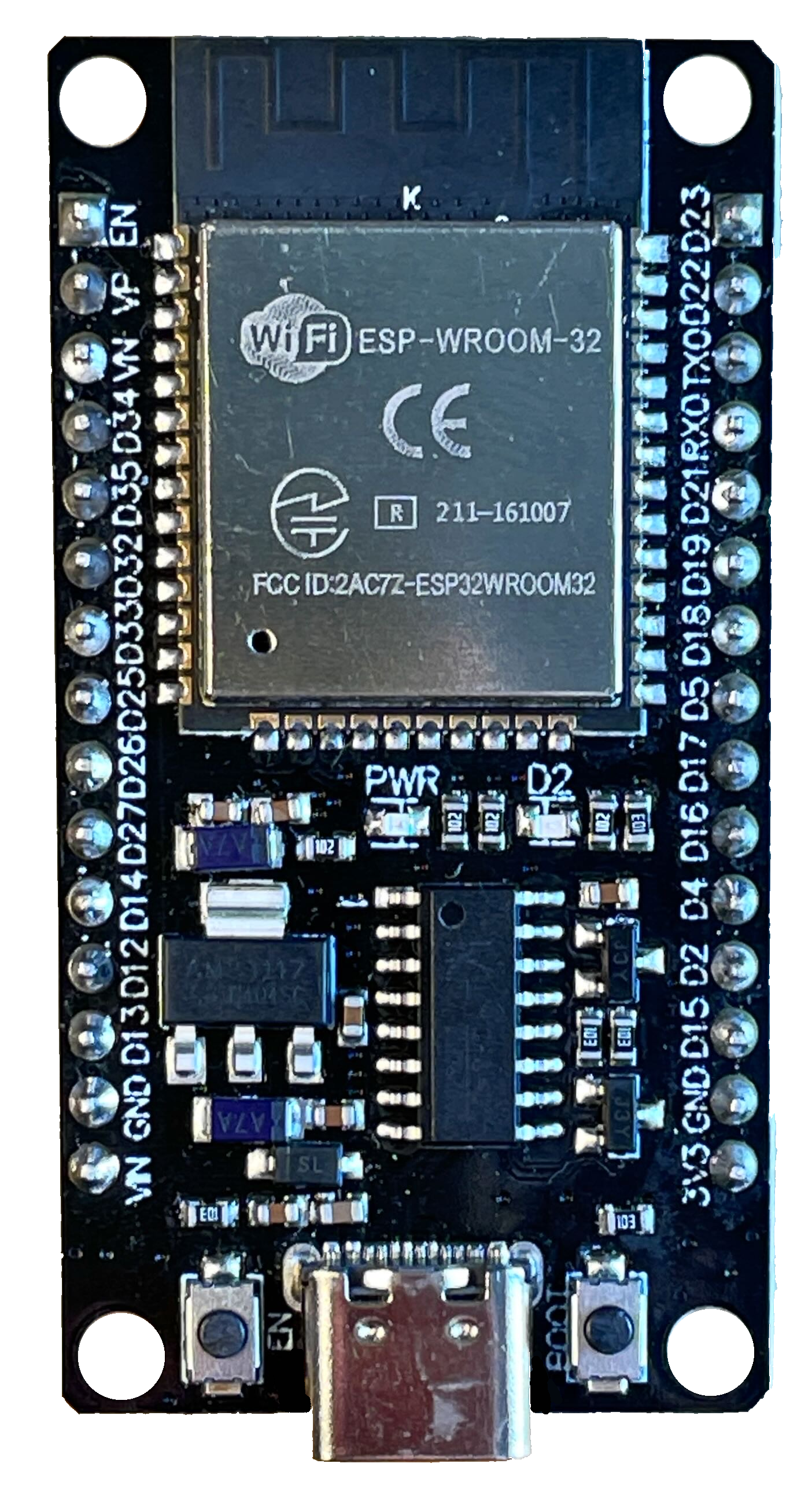
 Design with ESP-WROOM-32 (Real) in Cirkit Designer
Design with ESP-WROOM-32 (Real) in Cirkit DesignerIntroduction
The ESP-WROOM-32, manufactured by Espressif Systems, is a powerful and versatile Wi-Fi and Bluetooth module designed for Internet of Things (IoT) applications. It features a dual-core processor, integrated Wi-Fi and Bluetooth capabilities, and support for multiple communication protocols. This module is ideal for applications requiring wireless connectivity, efficient power consumption, and high processing power.
Explore Projects Built with ESP-WROOM-32 (Real)
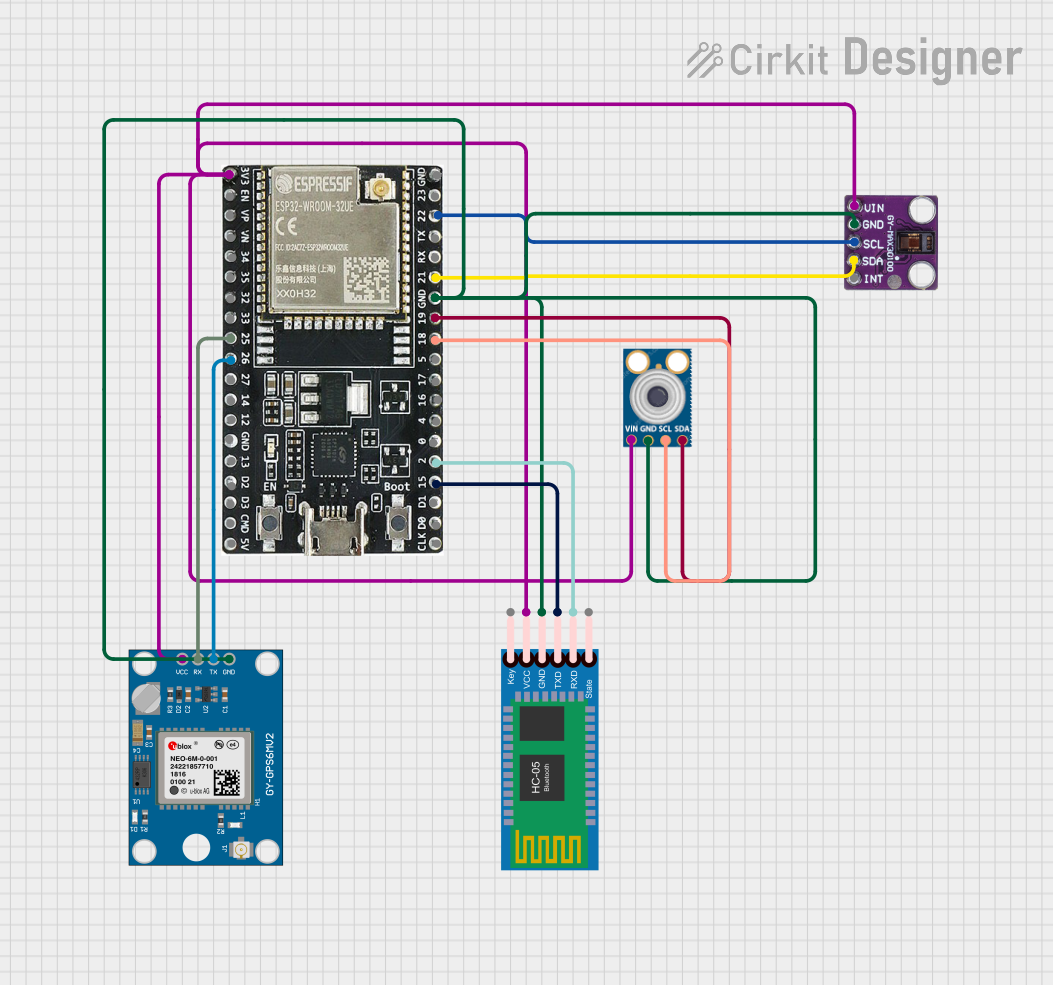
 Open Project in Cirkit Designer
Open Project in Cirkit Designer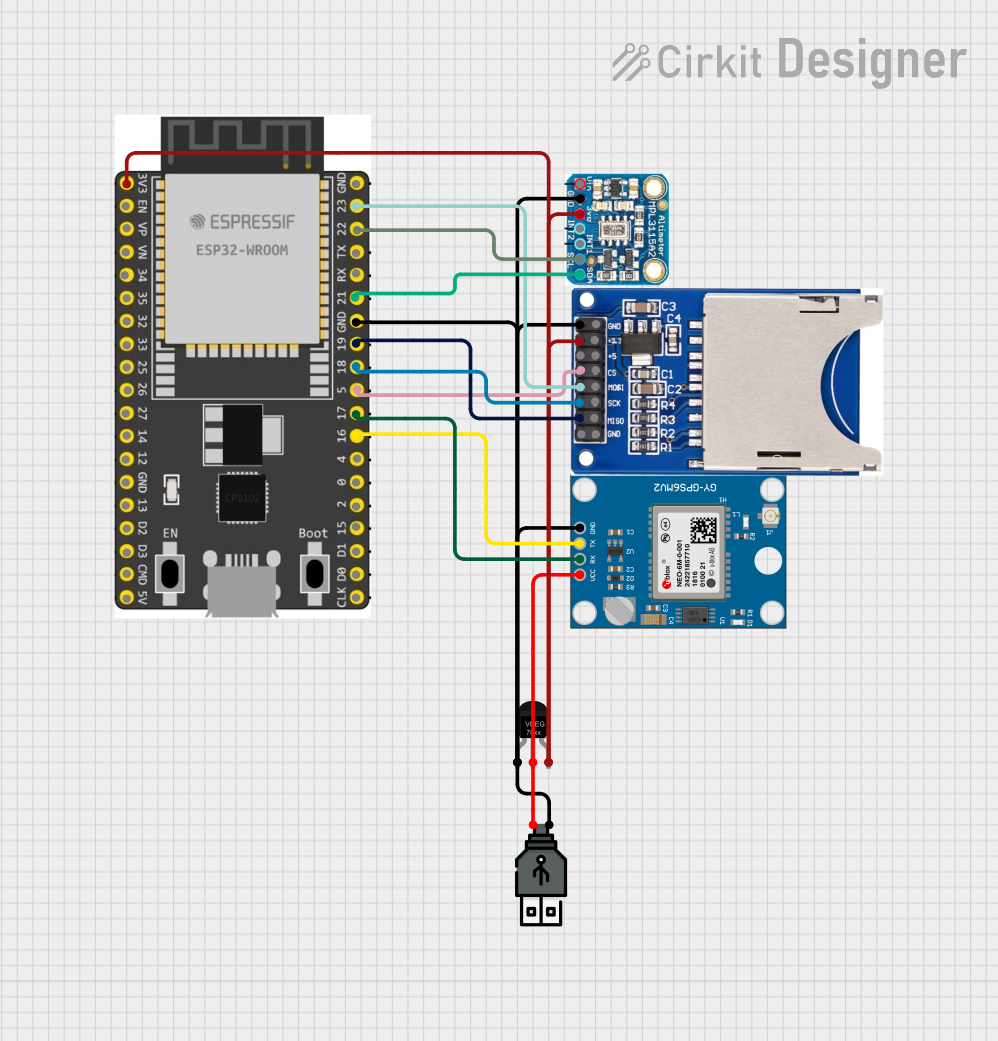
 Open Project in Cirkit Designer
Open Project in Cirkit Designer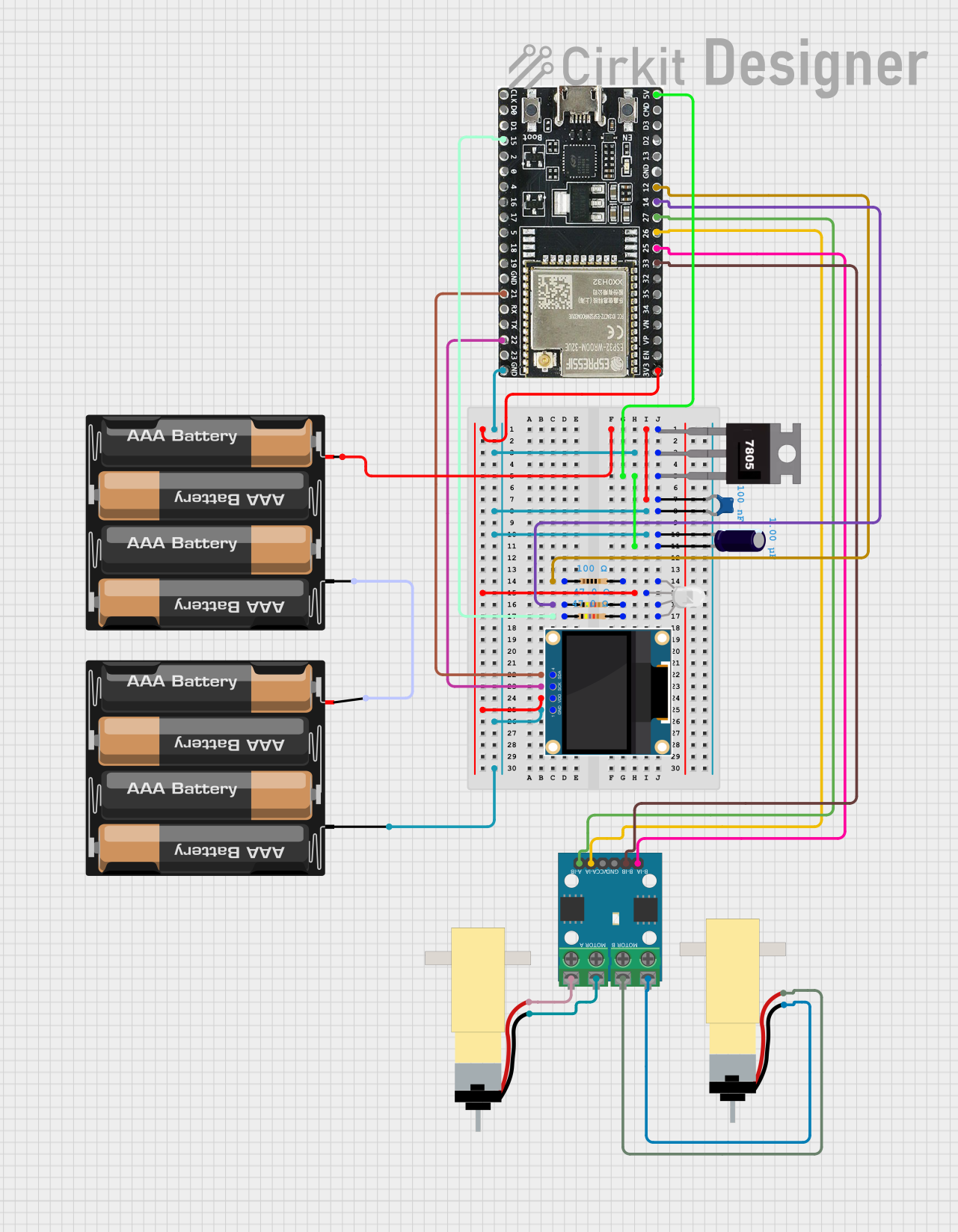
 Open Project in Cirkit Designer
Open Project in Cirkit Designer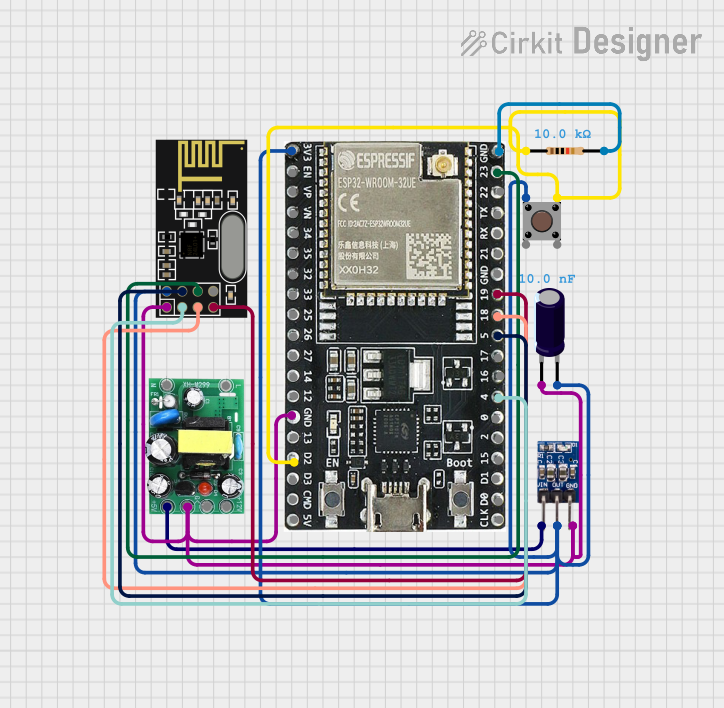
 Open Project in Cirkit Designer
Open Project in Cirkit DesignerExplore Projects Built with ESP-WROOM-32 (Real)

 Open Project in Cirkit Designer
Open Project in Cirkit Designer
 Open Project in Cirkit Designer
Open Project in Cirkit Designer
 Open Project in Cirkit Designer
Open Project in Cirkit Designer
 Open Project in Cirkit Designer
Open Project in Cirkit DesignerCommon Applications and Use Cases
- Smart home devices (e.g., smart plugs, thermostats, and lighting systems)
- Wearable technology
- Industrial IoT systems
- Wireless sensor networks
- Remote monitoring and control systems
- Prototyping and development of IoT projects
Technical Specifications
Key Technical Details
| Parameter | Specification |
|---|---|
| Microcontroller | Tensilica Xtensa® 32-bit LX6 dual-core processor |
| Clock Speed | Up to 240 MHz |
| Flash Memory | 4 MB (external SPI flash) |
| RAM | 520 KB SRAM |
| Wi-Fi Standards | 802.11 b/g/n (2.4 GHz) |
| Bluetooth Version | Bluetooth v4.2 BR/EDR and BLE |
| Operating Voltage | 3.0V to 3.6V |
| Power Consumption | 5 µA (deep sleep), 10 mA (light sleep), ~80 mA (active) |
| GPIO Pins | 34 (multipurpose, including ADC, DAC, PWM, etc.) |
| Communication Interfaces | UART, SPI, I2C, I2S, CAN, PWM, ADC, DAC |
| Operating Temperature | -40°C to +85°C |
| Dimensions | 18 mm x 25.5 mm x 3.1 mm |
Pin Configuration and Descriptions
The ESP-WROOM-32 module has 38 pins. Below is a summary of the key pins and their functions:
| Pin Number | Pin Name | Function Description |
|---|---|---|
| 1 | EN | Enable pin. Active high to enable the module. |
| 2 | IO0 | GPIO0. Used for boot mode selection. |
| 3 | IO2 | GPIO2. General-purpose I/O. |
| 4 | IO4 | GPIO4. General-purpose I/O. |
| 5 | IO5 | GPIO5. General-purpose I/O. |
| 6 | IO12 | GPIO12. General-purpose I/O. |
| 7 | IO13 | GPIO13. General-purpose I/O. |
| 8 | IO14 | GPIO14. General-purpose I/O. |
| 9 | IO15 | GPIO15. General-purpose I/O. |
| 10 | IO16 | GPIO16. General-purpose I/O. |
| 11 | IO17 | GPIO17. General-purpose I/O. |
| 12 | GND | Ground pin. |
| 13 | 3V3 | 3.3V power supply input. |
| 14 | TXD0 | UART0 Transmit pin. |
| 15 | RXD0 | UART0 Receive pin. |
| 16 | ADC1_CH0 | Analog input channel 0. |
| 17 | ADC1_CH1 | Analog input channel 1. |
| 18 | DAC1 | Digital-to-Analog Converter output 1. |
| 19 | DAC2 | Digital-to-Analog Converter output 2. |
For a complete pinout, refer to the official datasheet provided by Espressif Systems.
Usage Instructions
How to Use the ESP-WROOM-32 in a Circuit
- Power Supply: Connect the 3V3 pin to a 3.3V regulated power source. Ensure the GND pin is connected to the ground of the circuit.
- Boot Mode: To upload code, connect GPIO0 to GND during reset. For normal operation, leave GPIO0 unconnected or pull it high.
- Communication: Use the UART pins (TXD0 and RXD0) for serial communication with a microcontroller or computer.
- Programming: The ESP-WROOM-32 can be programmed using the Arduino IDE, Espressif's ESP-IDF, or other compatible development environments.
Important Considerations and Best Practices
- Voltage Levels: Ensure all GPIO pins operate at 3.3V logic levels. Use level shifters if interfacing with 5V devices.
- Antenna Placement: Avoid placing metal objects or PCB traces near the onboard antenna to ensure optimal Wi-Fi and Bluetooth performance.
- Power Supply: Use a stable and noise-free power supply to prevent unexpected resets or malfunctions.
- Deep Sleep Mode: Utilize the deep sleep mode for battery-powered applications to minimize power consumption.
Example Code for Arduino UNO
Below is an example of how to use the ESP-WROOM-32 with the Arduino IDE to connect to a Wi-Fi network:
#include <WiFi.h> // Include the Wi-Fi library for ESP32
const char* ssid = "Your_SSID"; // Replace with your Wi-Fi network name
const char* password = "Your_Password"; // Replace with your Wi-Fi password
void setup() {
Serial.begin(115200); // Initialize serial communication at 115200 baud
delay(1000); // Wait for a second to stabilize the serial monitor
Serial.println("Connecting to Wi-Fi...");
WiFi.begin(ssid, password); // Start connecting to the Wi-Fi network
while (WiFi.status() != WL_CONNECTED) {
delay(500); // Wait for the connection to establish
Serial.print(".");
}
Serial.println("\nWi-Fi connected!");
Serial.print("IP Address: ");
Serial.println(WiFi.localIP()); // Print the assigned IP address
}
void loop() {
// Add your main code here
}
Troubleshooting and FAQs
Common Issues and Solutions
Module Not Responding:
- Ensure the EN pin is pulled high to enable the module.
- Verify the power supply is stable and within the 3.0V to 3.6V range.
Wi-Fi Connection Fails:
- Double-check the SSID and password in your code.
- Ensure the Wi-Fi network is within range and not overloaded.
Serial Communication Issues:
- Confirm the correct baud rate is set in the serial monitor.
- Check the connections between the ESP-WROOM-32 and the host device.
GPIO Pin Malfunction:
- Verify that the pins are not being used for multiple conflicting functions.
- Check for proper pull-up or pull-down resistors where required.
FAQs
Q: Can the ESP-WROOM-32 operate on 5V?
A: No, the ESP-WROOM-32 operates on 3.3V. Using 5V can damage the module.
Q: How do I reset the module?
A: Pull the EN pin low momentarily to reset the module.
Q: Can I use the ESP-WROOM-32 for Bluetooth audio streaming?
A: Yes, the ESP-WROOM-32 supports Bluetooth Classic and BLE, which can be used for audio streaming with appropriate libraries.
Q: What is the maximum range of the Wi-Fi connection?
A: The range depends on environmental factors but typically extends up to 100 meters in open space.